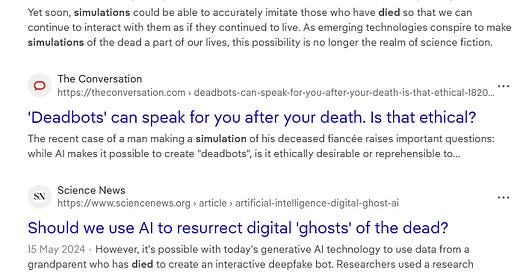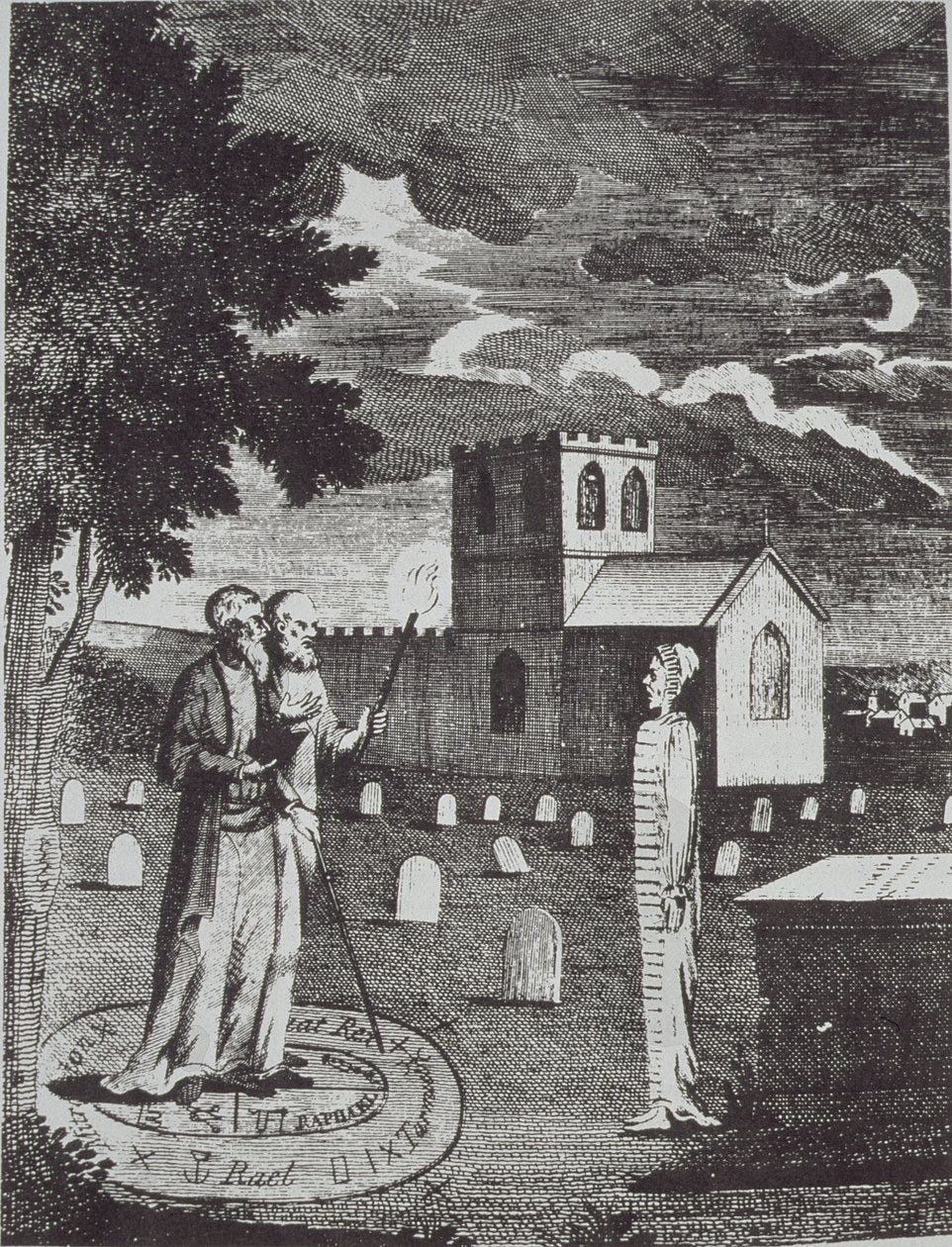About 20 years ago, when the Internet was still a wild and untamed cyberspace landscape, I came across an article concerning the growing phenomenon of people who had died, but their free webpage sites still existed. This was during the age of MySpace, Tripod, and Geocities, when anyone could create their own space on the Internet and fill it with their interests and thoughts. These free webpages also included a comment section. On such pages belonging to people who had died, grieving loved ones and friends would leave messages in the hope that somehow the departed individuals might be able to access these communications. This phenomenon was especially prevalent on pages belonging to murder victims or people who had gone missing and were presumed dead.
Later, this manifested with people placing mobile phones inside the coffins of the deceased, along with large backup batteries, so they could be called while inside their coffins underground. Now while this may strike some people as being part of the grieving process, and others see it as being macarbe and disturbing (I tend to side with the latter), it demonstrated something of an emerging belief that digital communication devices, software and networks could somehow cross from the corporeal and into the incorporeal realms so as to reach people who were no longer alive.
In more recent times, this broadband mediumship has grown into a sizable industry of people who now animate photos of their dead friends and family with the use of complex AI software systems. There is something particulary unsettling about this practice as it indicates that within this age of digital communication many people do not know what life is anymore than they know what being at a concert is like; as they experience what is on the stage in front of them not by looking at the stage, but by looking at the performance on their handheld devices instead. Not to mention that it is a violation of the universal belief that the dead must be left to rest in peace and not turned into a CGI video of them laughing and moving.
With the growth of AI, we have now entered the world of “Digital Necromancy”. Using AI to bring the dead back to life in more complex and interactive digital forms, in much the same manner that John Dee and Edward Kelly had raised the dead at Walton-le-Dale churchyard in the north of England.
However, these days such practices, rather than being seen as unethical or unholy, it is being sold as a healing tool for the bereaved. Not only can one now talk to their dead loved ones, but by utilizing the dead person’s digital remains, garnered from their Social Media and everything else they left online, but the dead will respond using digital video images and even holograms. Actual robots of the dead being used for this purpose are also apparently in development. Considering what I recently discovered about the demonic nature of AI, this does not fill me with optimism.
In the academic paper entitled Life, death, and AI: Exploring digital necromancy in popular culture—Ethical considerations, technological limitations, and the pet cemetery conundrum, the authors James Hutson and Jeremiah Ratican summarize:
"This article explores the rise of generative AI, particularly ChatGPT, and the combination of large language models (LLM) with robotics, exemplified by Ameca the Robot. It addresses the need to study the ethical considerations and potential implications of digital necromancy, which involves using AI to reanimate deceased individuals for various purposes. Reasons for desiring to engage with a disembodied or bodied replica of a person include the preservation of memories, emotional closure, cultural heritage and historical preservation, interacting with idols or influential figures, educational and research purposes, and creative expression and artistic endeavors. As such, this article examines historical examples of the practice in hologram concerts, CGI characters, and others in order to analyze the ethical concerns related to privacy, consent, and commercial gain. It delves into the challenges of accurately representing individual personalities, misrepresenting cultural context, and the limitations of available data. Furthermore, it explores the Pet Cemetery conundrum and its impact on the grieving process, mental health, and the moral implications of using AI to generate interactions with the deceased. By contemplating future use cases like interactive virtual assistants and realistic historical reenactments, the article highlights the importance of addressing ethical implications as these technologies continue to advance and contributes to the discourse on the responsible and ethical use of generative AI, LLM, and robotics in the context of digital resurrection, calling for ongoing discussions and considerations of AI rights, social dynamics, and the grieving process."
In the cold world of mainstream academia ethical concerns are being raised. Even if they are not being tackled from a spiritual point of view, the psychological and cultural implications are troublesome. What is life if death is no longer real?
In a world where life has become increasingly meaningless for people in the so-called Developed World, it would appear that the same situation now applies to death. As if the entire human experience is being replaced by a digital facsimile of existence without meaning or corporeal sensation. Not surprisingly, there is no end to Big Tech opportunists only too eager to cash in on turning humanity into the ghost that haunts itself.







Leaving cell phones in the coffins put a whole new meaning to being a dead ringer. (From the time when people were sometimes buried alive and came to in their graves or people feared that could happen so a bell was place above ground with with a cord into the coffin).
Now AI simulacrums of the dear departed who somehow remain with us is macabre indeed. Dad died years ago but is still with us criticizing what we do or didn't do right. "If You only listened to me ... Mother is still here criticizing the daughter in law because she doesn't make meals the way her son likes, and doesn't keep a clean and tidy enough house. Or the dead spouse always going on about how the other spouse cheated on him or her. Matt Groenings "Life In Hell" and Gary Larson's Far Side comics couldn't come up with a better comic strip concept.
But just think how the funerary business guilted people into embalming, Coffins in weatherproof caskets, Maintaining expensive marble yards all because the Egyptians did it. We were also told cremation was wrong because Jesus would not be able to resurrect the dead on judgement day. Yet the same Bible says "From ashes to ashes, dust to dust".
Now we would burden the families to never ending contracts to maintain the AI of Grandma because you wouldn't want to see her unplugged and lost for all time, would you? That along with the fees to keep them cryogenically frozen until a cure for whatever killed them came around. No wonder some people say that living during the bronze age was probably one of the best times to live.
There must come a point where the unreality that so many people live in just stops working anymore. It stops providing the experience required. You hit the switch but the lights don't come on. Maybe we are seeing natural selection in real time. The blue hair will grow out. The piercing holes will close up and heal. Maybe the tattoos can be lasered away but the physic void left behind will force us to reopen the psychiatric hospitals big time.